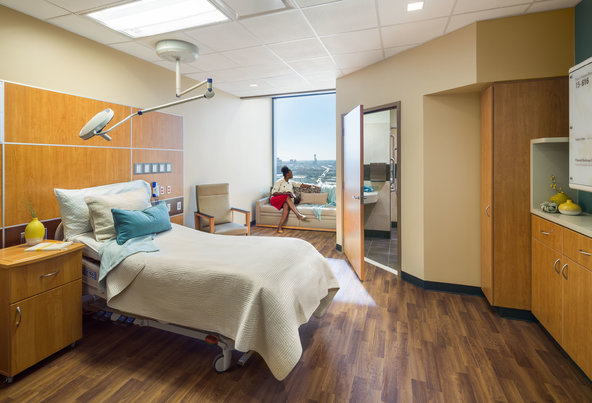
21 Mar What One Hospital Did to Help Patients Heal Faster
In 2003, I was hired as a Feng Shui consultant to assist in the building of a hospital in Hudson, Wisconsin. My position on the design team enabled me to offer ideas for color, furniture placement, office arrangements, an overall entry experience, optimal garden settings—-and for creating healing rooms in the in-patient wing.
Feng Shui is the art and science of arranging physical space so that it supports the intentions of those who work or live—or heal—within the walls of that environment. It relies on a systematic assessment of:
- how a person is positioned in a room,
- how the building relates to topographical considerations,
- what events may have occurred in the space before the current individuals,
- what may have occurred on the land before construction,
- the shape of the building or room,
- when the building was built, to name a few.
The other consideration is how the space feels. Allowing for individual preferences, the consensus should be that a space or a room feels comfortable, safe, pleasant—and, in the case of a hospital room, healing.
Artwork
One of the discussions I had with the design team was about the artwork that they were considering hanging in each of the rooms. From a Feng Shui perspective, healing art should be from nature and it should show or imply a horizon line—both aspects bring someone back to balance which can increase their healing process.
The curator on staff (yes, the hospital had a curator for just this kind of discussion) decided to come up with an “art cart.” A cart full of various nature paintings would be shown to a patient as part of their admissions process. They could choose the one they preferred which would then be hung in their room. This gave them the chance to look upon something that they liked, creating positive feelings which would enable their healing to occur more easily and quickly.
Headboard
In an effort to support people as they healed, we discussed how a headboard could be included behind each patient bed. Because of the instruments, the lights, and all other required medical appliances, an actual headboard was not possible. Each room in Hudson Hospital has a painted headboard—-providing the feeling of one without disturbing hospital protocol.
Windows
Because this hospital is one-story, each room had the opportunity to provide another connection to nature besides the painting—-an actual look at something from nature. The system of Feng Shui is reliant on and follows the flow of nature. The problem is that often hospital room windows are positioned too high for someone in bed to see anything other than the tops of trees and some sky. Each window was enlarged vertically so the patient can easily see the gardens, statues, flowers and birdfeeders right outside the window.
At Home Feeling
The hospital also re-created a bedroom feel in each room (every room is private) with wood floors, living room furniture (recliners, sofas) and home-made quilts. Making sure the rooms look welcoming and comfortable, they did not lose the assurance that this was also a professional and top-notch organization. Feng Shui is, above all, about the feeling of a space.
One Final Outcome
The art cart program mentioned earlier was discontinued after a year or so. Not because anyone at the hospital lost faith in what the art was trying to do. Not because anyone felt it wasn’t important anymore. On the contrary, the art cart was discontinued because patients were being discharged ahead of schedule. The art was being circulated so quickly that it was difficult to keep up. Permanent nature-based art was hung in each room.
Creating a hospital room that provides a calm and safe place will not only support the patient but the staff and visitors as well. At Hudson Hospital, Feng Shui principles were applied to help create a feeling of health and healing, harmony and hope—and people were going home a lot quicker.
